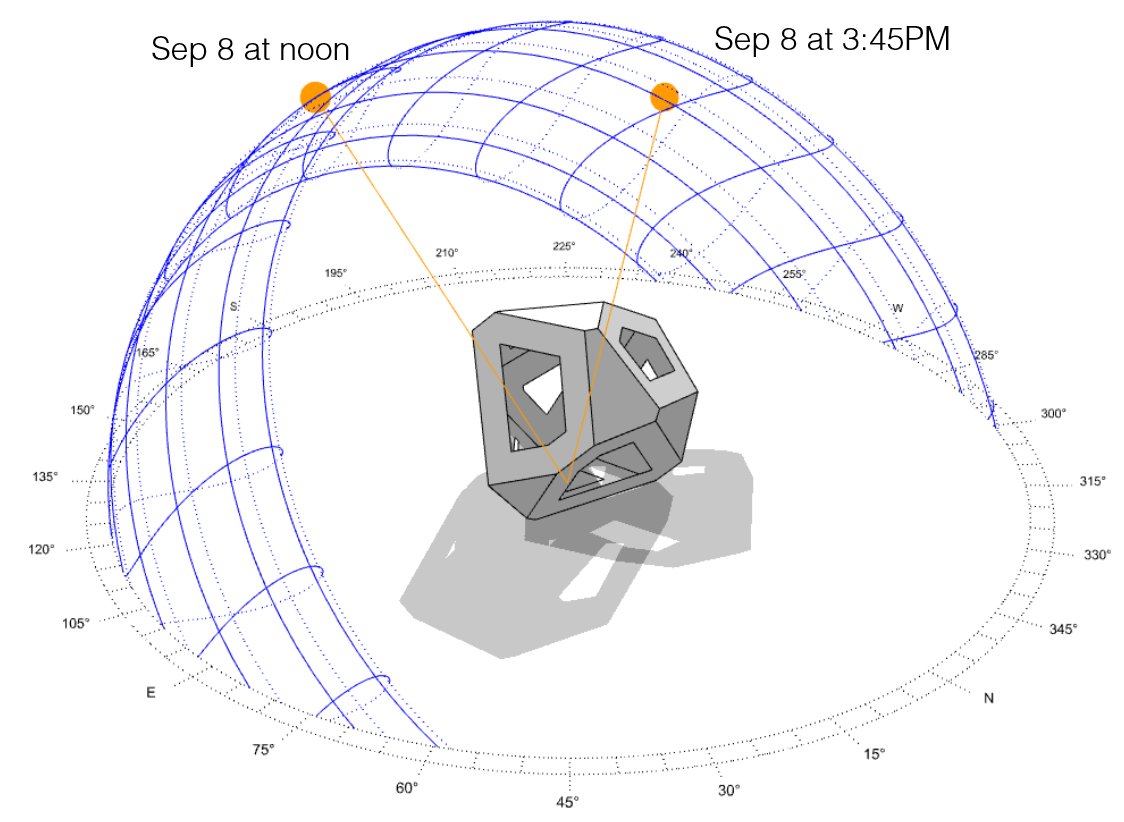Shading Studies and Sun Path Diagrams
Background Reading: DH-I chapter 6 | MIT lecture: Where is the Sun
1. Direct Shading The objective of this exercise is to validate the results of direct shading studies provided by DIVA-for-Rhino and other daylight simulation tools. To do so, you are asked to take at least two photos of an object of your choice outside at different times of day under clear sky conditions. You are then asked to model the object in Rhino and generate two clear sky visualizations under the same sky conditions from about the same perspective as the photos. Discuss your findings. If you are using DIVA-for-Rhino, a tutorial on how to conduct a direct shading study are available for both DIVA Rhino and DIVA Grasshopper . An example study by Jeff Geisinger is shown below.
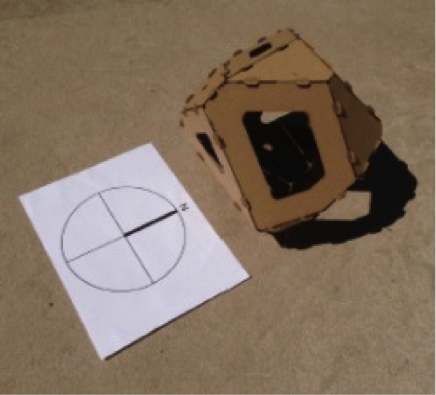 |
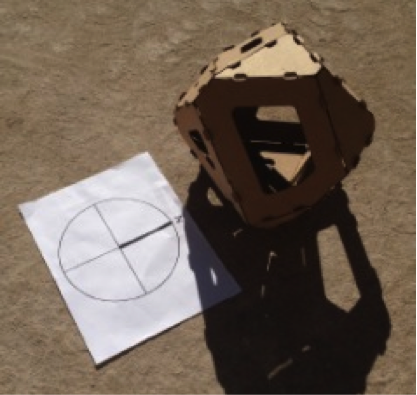 |
September 8, 12.00pm Photo |
September 8, 3.45pm Photo |
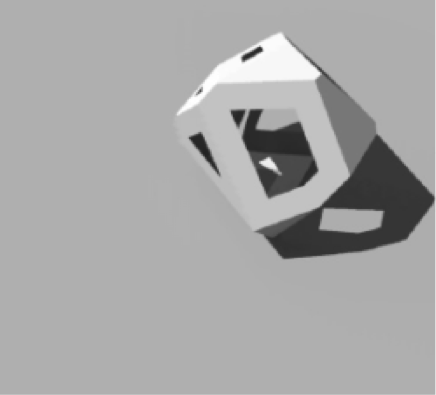 |
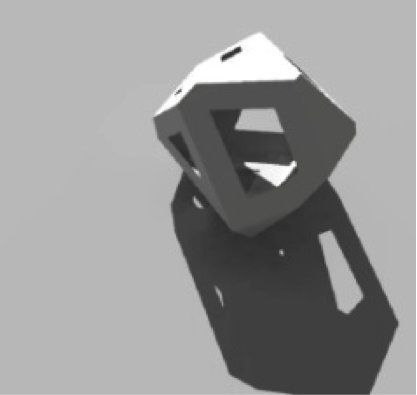 |
September 8, 12.45pm DIVA/Radiance |
September 8, 3.45pm DIVA/Radiance |
2. Annual Sun Path Diagram Show an annual sun path diagram of your object in Rhino using for example the DIVA Grasshopper sunpath component. An example result is shown below..
|
Sunpath Diagram DIVA |
